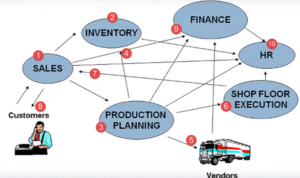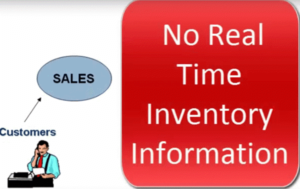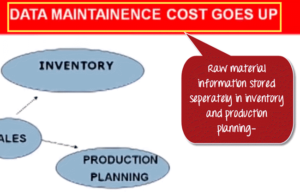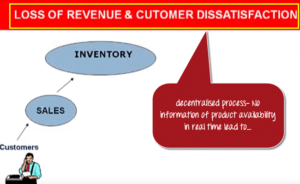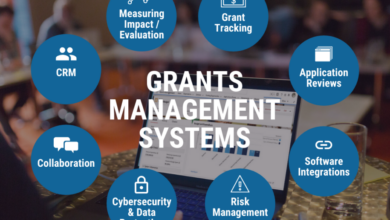How Important Is SAP Experience? What Does It Means

SAP stands for Systems Apps and Products in Data Base Processing. Sap experience, by definition, is also the name of the ERP (Enterprise Resource Planning) software and the name of the company. SAP Software Application is a European multinational, founded in 1972 by Wellenreuther, Hopp, Hector, Plattner, and Tschira. They establish software services for managing company operations and consumer relationships.
How Important Is SAP Experience? What Does It Means
In this article, you can know about sap experience here are the details below;
SAP system includes several completely integrated modules, which covers essentially every aspect of organization management. SAP is # 1 in the ERP market. Since 2010, SAP has more than 140,000 installations worldwide, over 25 industry-specific service options, and more than 75,000 customers in 120 nations. Other Competitive items of SAP Software in the market are Oracle, Microsoft Dynamics, and so on.
What is SAP ERP? Why is it required?
The very basic question for any newbies is why Business Resource Preparation, likewise called ERP, is required? To answer this, let’s examine this typical company scenario.
Expect a customer approaches a sales team requesting a particular item. The sales group contacts the inventory department to inspect the schedule of the item. To their surprise, the sales team learned that the item is out of stock. So next time this does not occur, they need to introduce an SAP ERP tool.
Before we see in detail what ERP is and how ERP can help in your service process, we will comprehend how various departments are associated with the whole company procedure, right from ordering the raw material– to producing products– to providing final products to the customer.
Here is the whole procedure that is followed by any business unit.
1. Client contacts the sales group to inspect the schedule of the product
2. Sales team approaches the Stock department to look for the availability of the item.
3. If the item runs out of stock, the sales group approaches the Production Planning Department to manufacture the item.
4. The production preparation team consult the stock department for the schedule of raw material
5. If the raw material is not offered with inventory, the Production Planning group buys the raw material from the Vendors
6. Then Production Planning forwards the raw products to the Shop Floor Execution for actual production
7. Once prepared, the Shop Floor Group sends the goods to the Sales Group
8. Sales Group who in turn deliver it to the customer
9. The sales group updates the financing with earnings produced by the sale of the item. The production preparation team upgrade the financing with payments to be made to different vendors for basic materials.
10. All departments approach HR for any Personnel associated issue.
That is a normal service procedure for any making company. Some essential inferences one might stem from the circumstance would be.
- – It has lots of departments or organization units
- – These departments or service systems continuously interact and exchange data with each other
- – The authority of any organization lies in efficient interaction, and information exchange, within these departments, as well as an associated third party such as suppliers, outsourcers, and customers.
Based on how communication and information exchanged is handled. Enterprise systems can be broadly classified as
1) Decentralized System
2) Centralized System, which is likewise called ERP.
Decentralized System
Let’s look at a Decentralized system initially in a business with a Decentralized System of Data Management. There are two major problems–.
- – Data is maintained in your area at the private departments.
- – Departments do not have access to info or information from other departments.
To determine issues developing due to the decentralized Business management system, let’s take a look at the same business process again. The client approaches the sales group for a product, but this time around, he needs the item immediately.
Since it is a decentralized processes, the Sales Team does not have real-time information access to product availability. So they approach the Stock department to inspect the accessibility of the item. This procedure requires time, and the Consumer selects another vendor resulting in loss of earnings and customer dissatisfaction.
Now, suppose the item runs out of stock, and the Sales Group approaches the Production Preparation team to produce the product for future usage. Production Preparation Group checks the schedule of the raw products needed.
In a decentralized system, raw material details are stored independently by Production Planning along with the Stock Department. Therefore, information maintenance expense (in this case, Basic material) increases.
The raw material information is offered in two different departments, Stock along with Production Preparation. When the sales group checks a particular basic material needed to manufacture the product, it shows the raw material is offered according to the stock. Based on the production preparation group’s database, the raw material is out of stock.
So, they go on and buy the raw product. Therefore, product, as well as stock cost, increases.
When the raw product is available, the shop floor department unexpectedly realizes they lack employees. They approaches the HR, who in turn hire short-lived employees at higher than market rates. Thus LABOR Boost.
The production preparation department fails to update the financing department on the materials they have acquired. The financing department defaults the vendor’s payment due date triggering the company’s loss of its reputation and even inviting a possible legal action.
These are just a some of the many issues with decentralized systems.
Some major issues with the decentralized system are:
- – Various diverse info systems produced individually with time are hard to maintain.
- – Incorporating the information is time and money-consuming.
- – Disparities and duplication of information.
- – Absence of prompt details results in consumer discontentment, loss of profits, and reputation.
- – High Inventory, product, and human resource cost.
These are some majors drawbacks for which we require a service. Well, the Solutions lies in Centralized Systems, i.e., ERP.
Centralized System.
In a business with a Centralized System of Information and Data Management.
1) Information is maintained at a central area and is shown in numerous Departments.
2) Departments have access to information or information from other Departments.
Let’s take a look at the same service process once again to comprehend how a Centralized Business System helps overcome issues postured by a Decentralized Enterprise System.
In this case, all the departments update a Central Details System.
- – When Consumer approaches the sales group to buy a product on an urgent basis. The Sales Team has detailed real-time access to the inventory products, which is upgraded by the Inventory Department in the Centralized System.
- – Sales Team respond to client request on time, resulting in Increased Profits and Consumer Pleasure.
- – If production is needed, the Sales Group update the Centralized Database, so that all the department stay informed about the item status.
- – Production Preparation Department is auto-updated by the Centralized Database for requirements. Production Planning Team checks the convenience of the raw products needed through the Central Database, which is updated by the Stock Department.
- – Thus, Data Duplication is avoided, and precise information is provided. The Shop Floor Group upgrades their Guy Power Status regularly in the Central Database, accessed by the HR department.
- – In case of scarcity of labor force, the HR team begins the recruitment process with substantial preparation to hire a suitable prospect at market price. Therefore labor cost goes down.
- – While vendors can quickly submit their invoices to the Central Enterprise System, which can be obtained by the finance department. Therefore, payments are made on time, and potential legal actions are prevented.
- – SAP software application is a type of Centralized System. SAP Systems are the most commonly used in ERP software.
Secret advantages of the centralized system are.
- – It gets rid of the duplication, discontinuity, and redundancy in the information.
- – Supplies information across departments in real-time.
- – SAP Business supplies control over numerous company procedures.
- – Boosts efficiency, much better inventory management, promotes quality, reduced product expense, effective human resources management, lowered overheads enhances revenues.
- – Better customer interaction and increased throughput. It also improves client service.
- – Hence, a central enterprise management system is required.
- – SAP Software is a centralized business administration system, also referred to as Business Resource Preparation.
- – The abbreviation of SAP is Systems Applications and Products in Data Processing.

